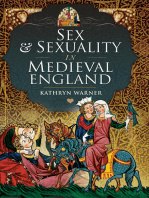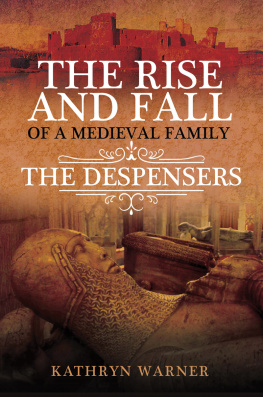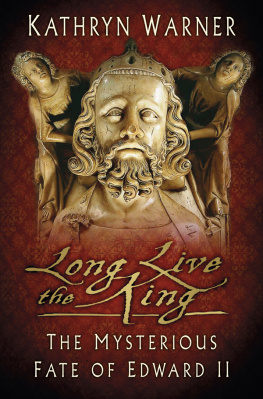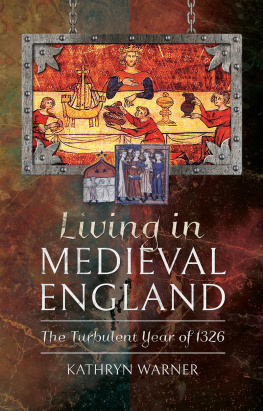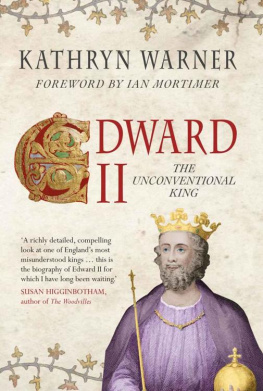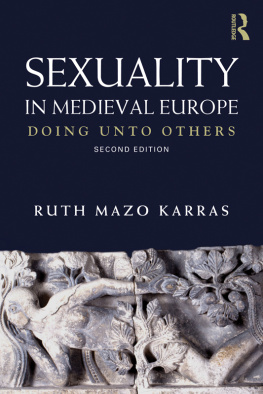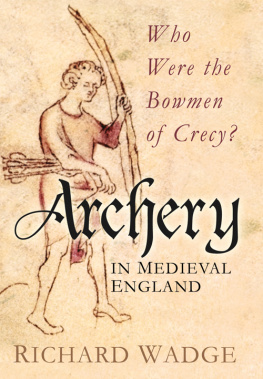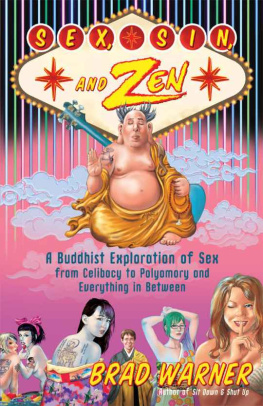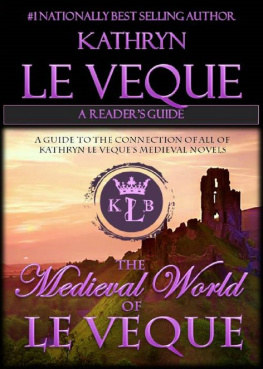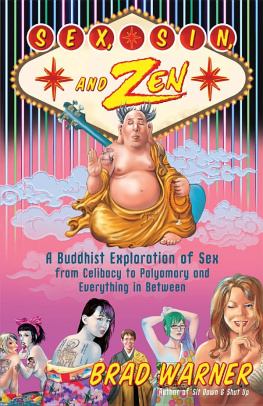Kathryn Warner - Sex and Sexuality in Medieval England
Here you can read online Kathryn Warner - Sex and Sexuality in Medieval England full text of the book (entire story) in english for free. Download pdf and epub, get meaning, cover and reviews about this ebook. genre: Non-fiction. Description of the work, (preface) as well as reviews are available. Best literature library LitArk.com created for fans of good reading and offers a wide selection of genres:
Romance novel
Science fiction
Adventure
Detective
Science
History
Home and family
Prose
Art
Politics
Computer
Non-fiction
Religion
Business
Children
Humor
Choose a favorite category and find really read worthwhile books. Enjoy immersion in the world of imagination, feel the emotions of the characters or learn something new for yourself, make an fascinating discovery.
- Book:Sex and Sexuality in Medieval England
- Author:
- Genre:
- Rating:4 / 5
- Favourites:Add to favourites
- Your mark:
- 80
- 1
- 2
- 3
- 4
- 5
Sex and Sexuality in Medieval England: summary, description and annotation
We offer to read an annotation, description, summary or preface (depends on what the author of the book "Sex and Sexuality in Medieval England" wrote himself). If you haven't found the necessary information about the book — write in the comments, we will try to find it.
Sex and Sexuality in Medieval England — read online for free the complete book (whole text) full work
Below is the text of the book, divided by pages. System saving the place of the last page read, allows you to conveniently read the book "Sex and Sexuality in Medieval England" online for free, without having to search again every time where you left off. Put a bookmark, and you can go to the page where you finished reading at any time.
Font size:
Interval:
Bookmark:
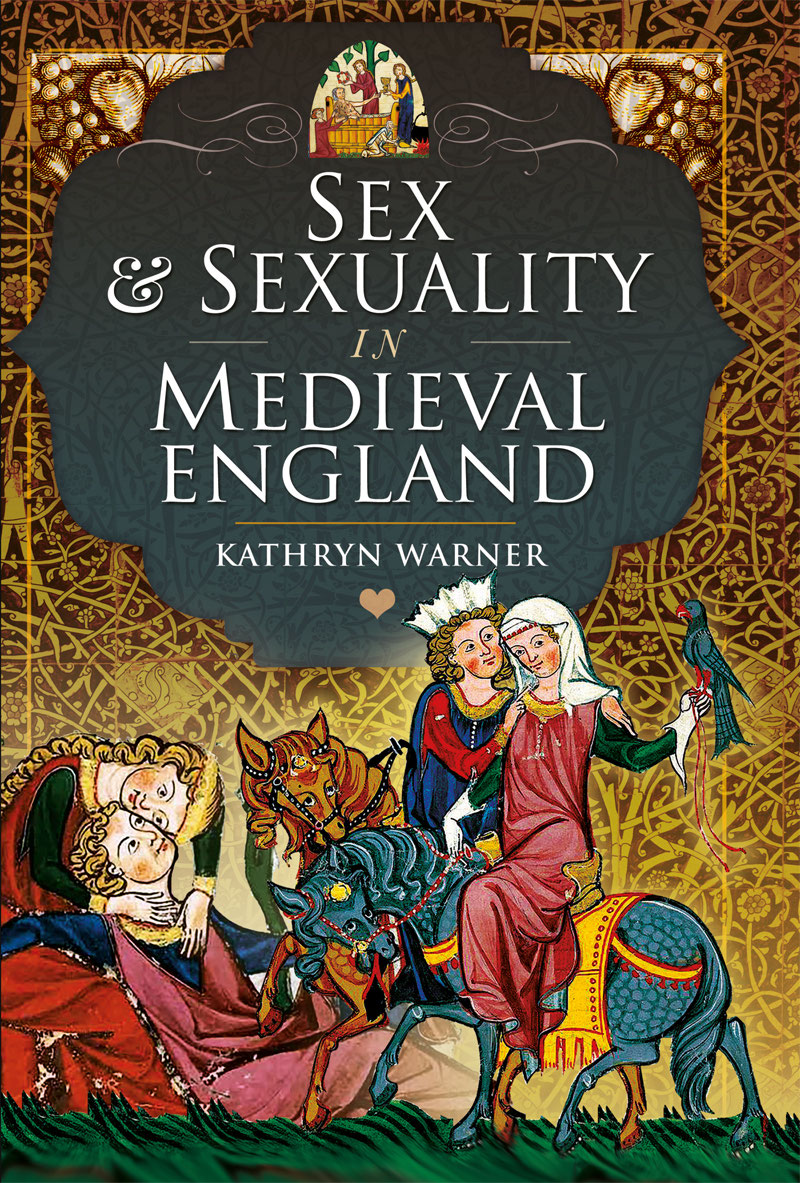
SEX AND SEXUALITY IN
MEDIEVAL
ENGLAND
SEX AND SEXUALITY IN
MEDIEVAL
ENGLAND
KATHRYN WARNER

First published in Great Britain in 2022 by
PEN AND SWORD HISTORY
An imprint of
Pen & Sword Books Ltd
Yorkshire Philadelphia
Copyright Kathryn Warner, 2022
ISBN 978 1 39909 832 8
Epub ISBN 978 1 39909 833 5
Mobi ISBN 978 1 39909 833 5
The right of Kathryn Warner to be identified as Author of this work has been asserted by her in accordance with the Copyright, Designs and Patents Act 1988.
A CIP catalogue record for this book is available from the British Library.
All rights reserved. No part of this book may be reproduced or transmitted in any form or by any means, electronic or mechanical including photocopying, recording or by any information storage and retrieval system, without permission from the Publisher in writing.
Pen & Sword Books Limited incorporates the imprints of Atlas, Archaeology, Aviation, Discovery, Family History, Fiction, History, Maritime, Military, Military Classics, Politics, Select, Transport, True Crime, Air World, Frontline Publishing, Leo Cooper, Remember When, Seaforth Publishing, The Praetorian Press, Wharncliffe Local History, Wharncliffe Transport, Wharncliffe True Crime and White Owl.
For a complete list of Pen & Sword titles please contact
PEN & SWORD BOOKS LIMITED
47 Church Street, Barnsley, South Yorkshire, S70 2AS, England
E-mail: enquiries@pen-and-sword.co.uk
Website: www.pen-and-sword.co.uk
Or
PEN AND SWORD BOOKS
1950 Lawrence Rd, Havertown, PA 19083, USA
E-mail: Uspen-and-sword@casematepublishers.com
Website: www.penandswordbooks.com
Henry III, reigned 1216 to 1272; son of King John and Isabelle of Angoulme; married Eleanor of Provence in 1236
Edward I, r. 1272 to 1307; son of Henry and Eleanor; married Leonor of Castile in 1254 and Marguerite of France in 1299
Edward II, r. 1307 to 1327; son of Edward and Leonor; married Isabella of France in 1308
Edward III, r. 1327 to 1377; son of Edward and Isabella; married Philippa of Hainault in 1328
Richard II, r. 1377 to 1399; son of Edward and Philippas eldest son the Prince of Wales; married Anne of Bohemia in 1382 and Isabelle de Valois in 1396; childless
Henry IV, r. 1399 to 1413; son of Edward III and Philippas son the Duke of Lancaster; married Mary de Bohun in 1394 and Juana of Navarre in 1403
Henry V, r. 1413 to 1422; son of Henry and Mary; married Katherine de Valois in 1420
Henry VI, r. 1422 to 1461 and 1470 to 1471; son of Henry and Katherine; married Marguerite of Anjou in 1445
Twelve pennies (written d for denarii) made one shilling (s), and 20 shillings made one pound ( or l for librae), i.e. 240d. Another unit of accounting was the mark, which was two-thirds of a pound and consisted of 160d or 13s and 4d. In the fourteenth century, a labourer typically earned 2d a day or 3 a year, and a master craftsman 6d a day.
A few myths about medieval sexuality and sex lives are still current, or were until not too long ago: chastity belts, twelve-year-old girls routinely married off to men old enough to be their grandfathers, lords enjoying the droit de seigneur or the right to have sex with a bride on her wedding night, men penetrating their wives through a hole in a sheet for the purpose of procreation only, everyone being filthy and smelly with bad teeth, most weddings taking place in June because people had recently had their annual wash in May, and surely many more. It probably goes without saying that the reality is far more complex and interesting.
One major issue when writing about personal and intimate matters in medieval times is that diaries did not exist yet, and personal letters were few and far between, so it is extremely difficult to know for certain what people thought of their own sexuality, or how they experienced their love lives and sex lives. There were, of course, no newspapers or magazines until centuries later, and although many Middle English poems took courtly love and the yearning for an unattainable woman as a frequent theme, little literature on the matter of sex and intimacy exists from medieval England. There is vanishingly little evidence for masturbation or erotic fantasies, and although, of course, it is beyond all doubt that some medieval people were same-sex attracted, nobody yet identified themselves as gay, bi or straight. There were important cultural differences, e.g. men often shared their bed with another man. This was not necessarily sexual but was a way of honouring another person and showing that you trusted him not to murder you in your sleep.
Sex and Sexuality in Medieval England covers the later medieval period, from roughly 1250/70 to 1450/70, and aims to debunk a few myths about medieval sexuality and to educate and entertain!
Chapter 1
Appearance
Before starting an account of the intimate lives of medieval people, can we determine what they might have looked like? For a start, and perhaps most importantly, it is extremely unlikely that they were anything like as dirty as the modern imagination might think. Certainly, the Middle Ages was an era long before the invention of power showers, and hot baths which required the heating of large quantities of water on a fire, numerous containers to fill a bathtub large enough for a person to immerse themselves in, and much manpower to carry away and empty all the containers again were far too labour-intensive for most people to bother with very often, if at all. This does not, however, mean that people did not wash and keep themselves clean. There was always a possibility to wash with water from a pitcher or basin, even if one could not immerse ones whole body in hot water. In his will of 1361, Humphrey de Bohun, Earl of Hereford, bequeathed a basin which he used for washing his head to his sister Margaret, Countess of Devon. Margaret herself left a pair of basins which were for washing the hands of her late husband Hugh Courtenay to Exeter Cathedral in 1391.
Alan Hacford of Norfolk, who worked as a chaplain in the 1320s, owned a brass dish for washing the head, worth 2d, and in the 1310s Katherine of Lincoln owned a basin with a washing-vessel worth the large sum of 4s. An inventory of the goods belonging to the late London fishmonger Thomas Mockyng in 1373 included seven wash-bowls. People also often washed in a stream or river, and sometimes took their lives into their hands while doing so; coroners rolls reveal that a few people drowned while washing themselves. Robert Waddenho drowned while washing in the River Nene in 1301, Maud Reynald drowned while bathing in a marl pit in Naseby, Northamptonshire in 1309 or 1310, and sixteen-year-old John Redebourne drowned while bathing in the Houndsditch in London in 1337. A few unfortunate Londoners, including Henry Overestolte in 1340, drowned in the Thames while washing themselves.
The three related texts about womens medicine known as the Trotula (meaning little Trota, a womans name), written in Salerno in the twelfth century, were well-known in medieval England both in the original Latin and in Middle English translation. The Trotula has a long section on how women should bathe and remove their body hair, and for washing ones hair, it recommends a shampoo of burnt vines, chaff of barley and liquorice wood. It includes tips on how a woman should wear cosmetics, which begins with an instruction that she should wash her face very well with French soap and warm water. The fifteenth-century Boke of Nurture includes instructions on how to prepare a bath for ones lord. A servant should hang sheets full of sweet herbs from the roof, and ensure that five or six sponges to lean on were available, plus one large sponge to sit on and another under the feet. Using a basin containing hot water and fresh herbs, the lords body was to be washed with a soft sponge and afterwards rinsed with warm rose water. The servant should dry him with a clean cloth as he stood on a foot-sheet, then fetch his socks and slippers and take him to bed. The Boke also contains instructions for medicinal baths. For ache, water as hot as the person could tolerate containing eighteen herbs including St Johns wort, mallow, camomile and brown fennel, was recommended.
Next pageFont size:
Interval:
Bookmark:
Similar books «Sex and Sexuality in Medieval England»
Look at similar books to Sex and Sexuality in Medieval England. We have selected literature similar in name and meaning in the hope of providing readers with more options to find new, interesting, not yet read works.
Discussion, reviews of the book Sex and Sexuality in Medieval England and just readers' own opinions. Leave your comments, write what you think about the work, its meaning or the main characters. Specify what exactly you liked and what you didn't like, and why you think so.

